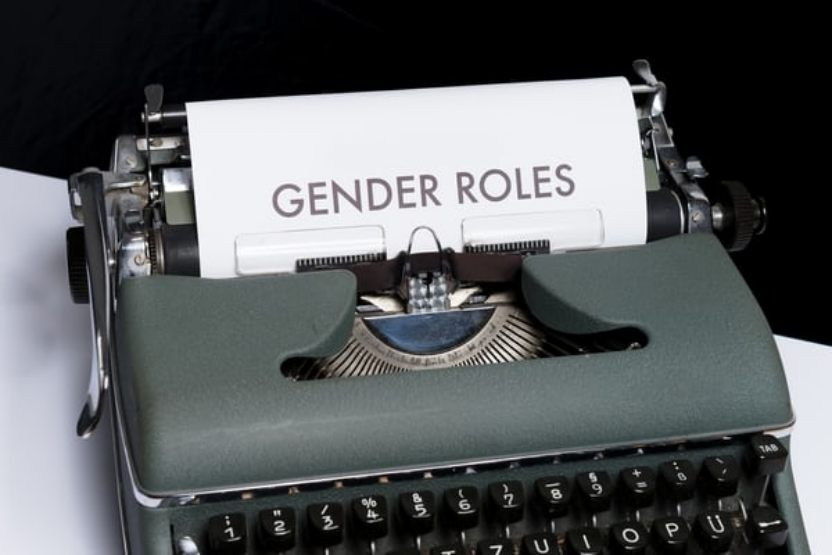This blog entry explores current concerns about the lack of male teachers in the British Early Childhood Education. Issues of gender, representativeness, and retention will be explored.

When I first thought about pursuing a teaching career, I carefully weighed all of my options. I was initially interested in being a Modern Foreign Language teacher in a Secondary school, then I flirted with the idea of working in a Primary school. Working in the local nursery was also a good option- and it was my ultimate choice. I believed that, overall, teaching was a path full of possibilities, where I could thrive and enjoy the experience of working alongside young children. I ended up working in the ECE in three different countries, Italy, USA, and the U.K. While I thoroughly enjoyed such experiences, I soon realised how my practice and the activities I ran reinforced gendered stereotypes, and my presence in the ECE was clearly defined by my being ‘a woman’. For example, I would inadvertently reinforce sexist stereotypes through language, play, and the choice of toys. I would congratulate boys for being ‘strong’ and ‘fast’, and girls for their ‘niceness’. Several other teachers would do the same. At the same time, I noticed that the ECE workforce itself appeared gendered, with a high number of women or young girls working – or expected to be working – in the ECE. I wondered why there were not men picking up the profession, and if a higher number of men would enable a better understanding of gender issues and helped tackle sexist stereotypes.
Several policy documents and lines of research explore the question in rich details. Why is the ECE workforce presenting heavy gender imbalances? Data reported by the DfE (2017) show that very few men enter the workforce. The pattern is similar in other international countries (Bonetti, 2019), making the environment highly gendered (Lazzari et al., 2013). In my research, I have interviewed five British male teachers, employed in the ECE, to discuss their reasons for entering the profession. Using their answers and following common themes from contemporary early years policy, I want to reflect on the new possibilities that a more gender balanced workforce can open for the sector and the implications for practice.
1. Tackling sexist stereotypes with children
Research has shown that a more balanced workforce can have a positive impact on children and help them debunk sexist assumptions (Burn and Pratt-Adams, 2015). Several of the male teachers I interviewed discussed how, while growing up, the fact that they never had a male teacher in ECE and KS1 was one of the reasons they never considered teaching in nursery and Reception. They simply saw the profession as something a woman is naturally better at. As such, there is an argument that providing children with a more diversified workforce would enable them to understand that both men and women can be ECE teachers. This is further supported by research conducted by the Fawcett Society (2019) outlining how exposing children to gender stereotypes may cause harm later in life.
2. Beginning meaningful gender conversations
The fact that male teachers are involved in a profession that is usually attributed to women can open critical dialogues with both male and female teachers about gendered behaviours in the ECE classroom and debunk normative gendered assumptions. Initially, the teachers I have worked with expressed perplexity about the role of gender in their practice. They commented that gender had nothing to do with ECE, and children did not care whether their teacher was a man or a woman. Our conversations, however, prompted them to look more closely to their work with children, and they realised that, indeed, most of their activities and play were influenced by gender stereotypes. This allowed the teachers to bring in more meaningful and critical conversations with other co-workers and teaching assistants in their settings. Some changes involved, for example, paying attention to the language used to describe activities, having mixed teams when playing sports, and introducing new books where the ‘hero’ was a girl. A participant told that, in one instance, a boy was upset because the protagonist that slew the dragon was a girl. This is evidence that children may be influenced by gender stereotypes and may be upset if the gender order is disrupted.
3. Still, there could be elements that reinforce gender stereotypes
A greater number of male teachers does not necessarily mean equality between genders. As the participants in my study disclosed, some stereotypical divisions in labour, play, and activities remained. For example, male teachers are usually more engaged in rough and tumble play, play ball games with boys, and are called upon when a child needed to be put on time out. There is also the assumption – often disclosed by parents – that male teachers working in ECE got ‘demoted’ or were just there for a short period of time waiting for a better paid profession or ‘real teaching’ opportunity.
4. Problems with retention
There are also concerns regarding possibilities for professional development and salary expectations. One teacher was concerned about his low salary, outlining mounting anxieties for not being able to provide for his family. Another participant shared that working with young children became a viable option in his 40s, only after himself and his partner put aside some savings. Low financial remuneration in the ECE is an obstacle for both male and female teachers, and a serious concern in the sector. Yet, within this topic, it further outlines that gender expectations still bestow on men the role of breadwinners in their families.
The discussion about diversifying the early years workforce is extensive and complex. I have outlined a number of reasons explaining why a numerical increase of male teachers may not enough to achieve gender equality, and may work at reinforcing sexist stereotypes. However, I believe that one way teachers can start debunking gender stereotypes in the classroom is to open a dialogue with their coworkers and reflect on the diverse ways gender impacts and influences their practice and activities in their classroom. This in turn can lead to a more nuanced understanding of different gender practices and a more nuanced practitioning of gender roles with the contemporary British ECE.
My name is Clarissa Frigerio and I am a PhD researcher with a keen interest in early childhood education. My research focuses on life histories and how cultural factors such as age, gender, social class, and geographical location shape an individual’s personal and professional career path. I’m originally from Italy, and I have worked in several early years settings in my native country, as well as the U.K. and the U.S.A. My pedagogical interests include creative elements of play in Reggio Emilia and Montessori early years settings.
Twitter: @Clary_fritz
References
Bonetti, S., 2018. The early years workforce in England, Education Policy Institute [online].
[Viewed 19 July 2021].
Burn, E. and Pratt-Adams, S., 2015. Men teaching children 3-11: Dismantling gender barriers.
Bloomsbury Publishing.
Department for Education, 2017. Early Years Foundation Stage (EYFS) Statutory Framework.
Lazzari, A., Vandenbroeck, M. and Peeters, J., 2013, July. The early years workforce: A
review of European research and good practices on working with children from poor and migrant families. In Background paper for the Transatlantic Forum on Inclusive Early Years in New York (pp. 10-12).
Richardson, A., and Golden, N. 2019. Fawcett research shows exposure to gender
stereotypes as a child causes harm later in life. Fawcett. Equality. It’s about time
[online]. 7 March 2019. [Viewed 18 July 2021]. Available from: https://www.fawcettsociety.org.uk/news/fawcett-research-exposure-gender-stereotypes-child-causes-harm-later-life.



